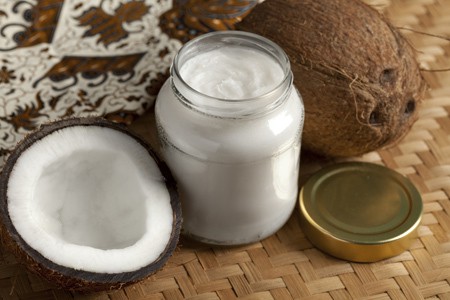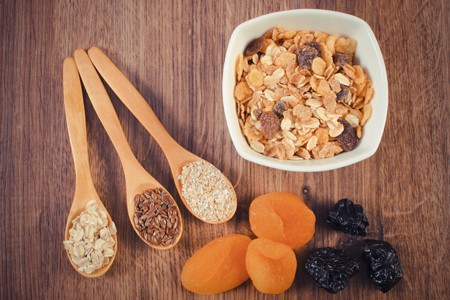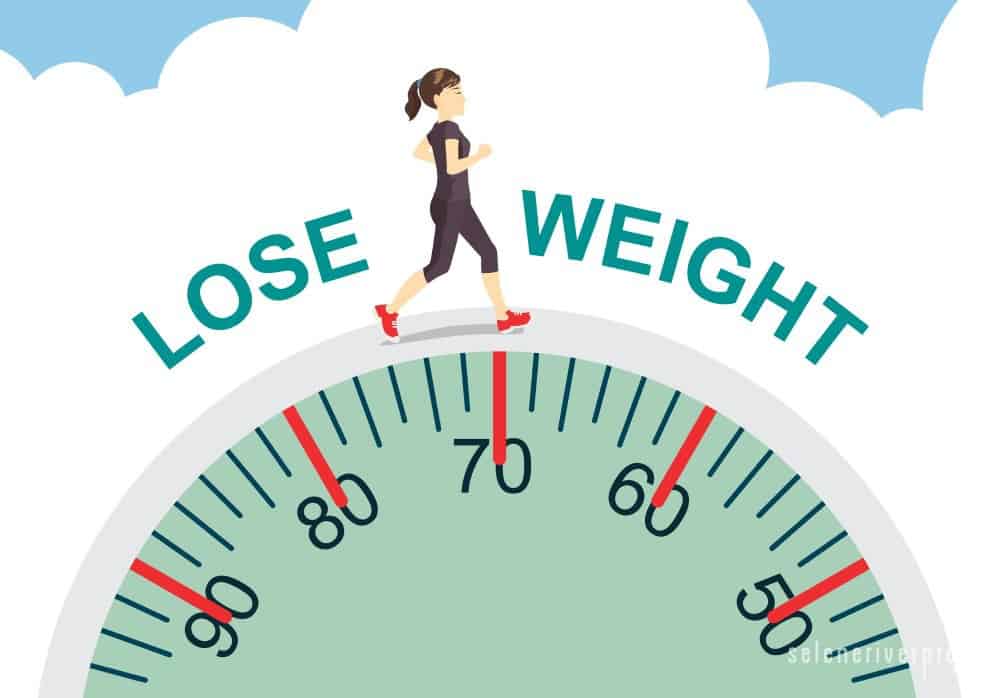How many times has your doctor or holistic practitioner—or even just a concerned friend—handed you a carefully outlined list of recommendations on this or that “best of the best” weight-loss diet, BUT once you got home, the information went on top of the coffee table, never to be looked at again? How about tippy-toeing around one of the promising diets you’ve read about in books, blogs, and magazines, and finally getting all revved up, but then not staying faithful to it? Sound familiar?
The result of this behavior is generally to become desperate. We often turn to dangerous supplements or medications and continue the tippy-toe search, only to realize that after months and sometimes years of trying, we still struggle to carry around that load of extra weight without much improvement. Why is that?
Well, maybe, like many of my own past clients, you’re what I call a “Just give me the information and then let me do it myself” type. You may be the kind of person who deep down inside simply isn’t willing to follow a script. If that’s the case with you, maybe the information below will be just your cup of tea.
Hopefully after reading this, you’ll be able to develop your very own personal program. And, if you’re faithful, you’ll be 100 percent rewarded with steady weight loss and a healthier, happier you. Why? Because with some sound basics, you, like others I’ve helped, are able to make all the choices yourself.
In my personal case, what worked best for me was following the Wise Traditions diet philosophy as advocated by Sally Fallon Morrell, president of the Weston A. Price Foundation. My first encounter with this philosophy was when Fallon’s book Nourishing Traditions was published. This way of eating is not a dieting plan! It allows foods from all the food groups, with no formal restriction on the amount. However, it does require you to make fermented foods, beverages, bone broths, sourdough breads, and other ancestral mainstays—or learn how to find them in stores or online (or hire a personal chef to make them for you). It’s worked out great for me making these foods myself, but that’s simply not the case for everyone.
So let’s discuss some important steps in the Wise Traditions diet philosophy.
Steps to Your Success
- Incentive: For Guaranteed Success
- Metabolism: Thermogenic Foods
- Fats: Why This One Fat Really Stokes the Fire
- Fiber: Why It’s Essential
- Sugar: Your Worst Enemy
- Proteins: A Crucial Component
- Carbohydrates: Not All Carbs Are Bad
Incentive: For Guaranteed Success
This may be the most difficult step in your effort to lose the amount of weight you desire. I’m very much a realist in acknowledging the genetic component that gives some of us a faster metabolic rate than others. The metabolic slow down is even more pronounced during and after menopause, and both women and men go through this dramatic change of life. (Read my blog post “Belly Fat—Simplified!” for more information on this specific time of our life.)
Even people experiencing this phase of life will necessarily need to search for the obstacles that are holding them back (with the exception of those who have a medical condition). You may recognize some of these as you read on. You’ll also need to determine the best ways for you to find the inner strength and resolve to give it one last try and stick with it until it becomes an ingrained good habit for life. I suggest a daily 20–30 minute reflection in the act of visualizing your life and body as that new healthier person who may already be there, but just happens to be hidden under a few pounds of excess, unhealthy, unwanted fat! (Smiles.)
Metabolism: Thermogenic Foods
As I carefully look back over my life, it’s apparent that we naturally look for the quick, easy fix rather than embrace a personal diet philosophy early in our life, or as soon as we see the spread coming. We seem to believe that the one dress or pant size increase is just temporary. What are we thinking?
A good example of a quick, easy weight loss diet is the famous Atkins ketogenic diet, which was all the rage a few years back. It’s no longer as popular as it was because most dieters couldn’t eat protein and fat to the almost total exclusion of other foods over the long term. That was especially true at the onset of the diet.
 Since then, ketogenic diets have come a long way. I believe that Bruce Fife, ND, has come the closest to writing and presenting us with a healthier, safer method to do ketogenic diets in his new book The Coconut Ketogenic Diet.
Since then, ketogenic diets have come a long way. I believe that Bruce Fife, ND, has come the closest to writing and presenting us with a healthier, safer method to do ketogenic diets in his new book The Coconut Ketogenic Diet.
However, if you try a keto diet and find that doing it for the long term isn’t in your nature, I invite you to try what I’m now whole-heartedly recommending: start incorporating wonderful, heat inducing, “burn-the-fat” foods. Yes, my recommendations may lead to a bit slower weight loss, but it will be permanent. It won’t be damaging, and, most important, you’ll have food variety galore.
Fats: Why This One Fat Really Stokes the Fire
My emphasis for this section is to leave no doubt in your mind that one fat is of special interest. That fat, of course, is coconut oil, with its unique medium chain fatty acid (MCFA) profile. Dr. Fife writes:
“Coconut oil has a bio-directional effect on the body. Because it promotes better health and nutrition, it moves the body in a direction to optimal weight. If you are overweight it will aid you in losing the weight; if you are underweight it will help you gain weight.”
Bruce Fife has popularized coconut oil and for the most part provided us with the best coconut oil information available. In a recent conversation, he reported the following (emphasis added):
“LCFA (long chain fatty acids in lard, tallow, etc.) are good and healthy fats that should be a part of a healthy diet. It is just that MCFA (medium chain fatty acids) in coconut oil have a metabolism boosting effect greater than any other fats.
“I recommend that people eat a mixture of the fats. If, however, weight loss or boosting metabolism is your main goal, then you should eat mostly coconut oil with its MCFA profile. Of course, the more MCFA you eat the more effect it has on metabolism. Therefore, eating other fats in place of coconut oil will of course dilute the effectiveness of the coconut oil. I eat a mixture of all the good fats, unless I’m trying to boost my metabolism or lose weight. Then I increase my intake of coconut oil. But normally I eat them all.”
Note from the Traditional Cook: That being said, you should not entirely give up other good fats but rather decrease them and get on a high coconut oil regimen till you reach a desirable goal. That sounds like it’s exactly what Dr. Fife ordered. He recommends 3–4 tablespoons daily, an amount you can easily consume in cooking. You can take it alone or add it to smoothies, soups, cereal, or any dish you serve.
Fiber: Why Fiber Is Essential
While doing research for my article “To Gluten or Not to Gluten,” I was able to work with Monica Spiller, a chemist who wrote the book What’s with Fiber along with her husband Dr. Gene Spiller, PhD. This book is a spellbinding revelation on the importance of fiber from heritage grains such as spelt, einkorn, emmer, and organic whole wheat. In her chapter on obesity, she quotes Dr. James Anderson:
“Whole grains appear to increase insulin sensitivity and reduce risk for developing diabetes and coronary heart disease. The bran layer of cereal grains is rich in fiber and phytochemicals that may have specific vitamins/minerals, anti-inflammatory, phytoestrogen and other effects that provide these benefits.”
Fiber from homemade whole grain breads, especially sourdough breads, helps keep the colon free from toxic buildup and may decrease many of the maladies that create excess weight conditions. (Read my “Ancient Grain Primer” for further study.)
Sugar: Your Worst Enemy
Rather than take up your time detailing the well-known fact that refined sugars are a virtual poison, I direct you to a recent blog post that explains why sugar is your worst enemy: “Guilt Free Dessert Recipes.”
Proteins: A Crucial Component
Sally Fallon says the following in her article “Protein: Building Blocks of the Body”:
“Nearly equal in importance to the completeness or quality of the protein we eat is how efficiently and completely the body can use it. Not only do we need all the eight (nine for children) essential amino acids in our diet, we also need them in our body in just the right proportions and at the same time.
“Net protein utilization tells us, among other things, that when we include animal protein in our diet, we can satisfy our daily protein requirements with smaller amounts of food than if we rely on vegetable products alone. Remember that even if you got your NPU from dried peas or navy beans, you would still be getting an incomplete, low-quality protein, deficient in the essential amino acids the body needs. In terms of quality and accessibility to the body, the animal protein in meat, milk and especially eggs goes further in meeting our needs than protein from plants.”
Note from the Traditional Cook: It’s of great importance that we follow this advice. If you fall short of getting a full array of amino acids, you may also use Protefood, whole food amino acid supplements from Standard Process.
Carbohydrates: Not All Carbs Are Bad
 We often hear the word carbohydrates or carbs, and in our fear of gaining a pound we throw out the baby with the bathwater! Are you a low or no carb person because you’re afraid of adding to an already bloated body? Many of us are, but as you better understand these wonder foods, you’ll learn there’s nothing to fear.
We often hear the word carbohydrates or carbs, and in our fear of gaining a pound we throw out the baby with the bathwater! Are you a low or no carb person because you’re afraid of adding to an already bloated body? Many of us are, but as you better understand these wonder foods, you’ll learn there’s nothing to fear.
There are two types of carbohydrates:
- Complex carbohydrates: These are often rich in fiber, thus they’re satisfying and health promoting at the same time. Commonly found in whole plant foods, complex carbs are often high in vitamins and minerals. See “A Complete Guide to Complex Carbohydrates” at Livestrong to learn more.
- Simple carbohydrates: Made of just one or two sugar molecules, all simple carbs are refined sugars. Very rapidly digested, they are the quickest source of energy, but they make poor food choices and are essentially empty of nutrients. See a list of the many simple carbohydrates here.
Due to this already lengthy dissertation on fat burning foods, now that you have the basics that will allow you to create your own diet plan, I’d like to simply give you a few suggestions that will help you achieve your desired goals. It is, after all, your life.
Important Points to Ponder
- Menu planning: This is an absolute essential piece of the puzzle. Most people eat whatever’s handy, but the foods you consume on the run are usually not in line with the metabolic producing effects you want. A weekly menu plan allows you to know what fat burning foods you’re having for each meal (and/or snacks) and also keep spending to a minimum. Two important high-energy, metabolism-boosting ingredients to include at least 2–3 times a week are foods rich in ribonucleic acid (RNA) and liver. Please refer to my blog posts “The Warming Power of RNA” and “The Yuck Factor: I Will Not Eat Organ Meats” to learn why.
- Exercise: This is a crucial component to removing excess fat and revving the metabolism. My favorite exercise is to walk (not jog) normally, either outside or on my treadmill, till I break a sweat. In other words it’s not about speed but about allowing the body to heat up at a normal pace. That may take between 30–60 minutes, depending on your stamina. The secret to this exercise is that once you break a sweat, you’re now burning excess fat for the next 12 hours!
- Probiotics and bone broths: Even if your choice isn’t the Wise Traditions diet as advocated by Sally Fallon Morell and the Weston A. Price Foundation, I strongly encourage you to become acquainted with the art of making your own probiotics and slimming bone broths. Read my blog post “The Tremendous Health Benefits of Lacto-Fermented Foods” to learn more, or check out my Cook Your Way to Wellness DVD and booklet for even more detailed information.
- Water: Hydrate, hydrate, hydrate! Drinking water increases the amount of calories you burn, which is known as resting energy expenditure. In adults, resting energy expenditure has been shown to increase by 24–30 percent within 10 minutes of drinking water. This lasts at least 60 minutes. One study of overweight and obese children found a 25 percent increase in resting energy expenditure after drinking cold water.
- Food lists: There are simply hundreds of websites, articles, and books you can explore for specific heat producing food lists. Print them out, compile the information, and then choose the heat producing foods that are best suited to your tastes. I found many by merely searching for “heat producing foods” or “foods that burn fat.” Here are a few of my favorites:
- 10 Spices, Herbs that Aid Weight Loss
- 10 Thermogenic Foods to Boost Your Metabolism
- How to Raise Metabolism
Photos from iStock/solar22 (at top); PicturePartners (coconut oil); ratmaner (grains and fruit)
Note from Maria: I am a Certified Natural Health Professional, CNHP, not a medical doctor. I do not diagnose, prescribe for, treat, or claim to prevent, mitigate, or cure any human diseases. Please see your medical doctor prior to following any recommendations I make in my blogs or on my website.




Another great article, Maria. Thank you for this valuable info!